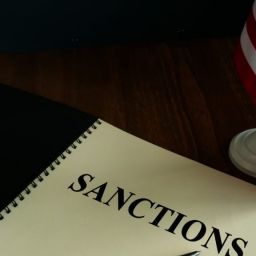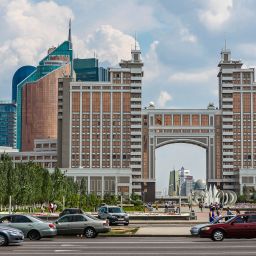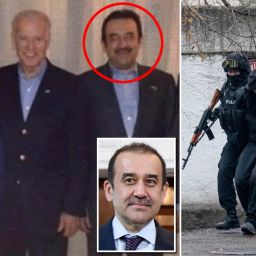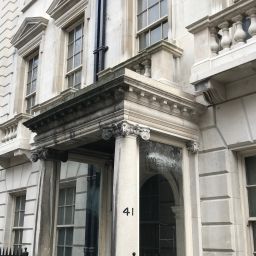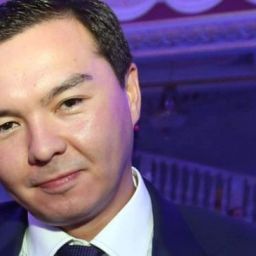The Public Foundation “Elge Qaitaru” appeals to you on the following issue.
In 2017, the Banking Sector Financial Stability Improvement Program was approved.
To provide state assistance to banks, two state funds were identified: Kazakhstan Sustainability Fund (KSF), owned by the National Bank, and the Problem Loans Fund (PLF), owned by the Ministry of Finance.
The Problem Loans Fund was established in 2012 under the National Bank to assist banks in the process of “cleaning” the balance sheet from “non-performing” loans in order to improve the quality of the loan portfolio in the banking system. However, large operations on the fund began only in 2017, when the Banking Sector Financial Stability Improvement Program was approved and the Problem Loans Fund was transferred to the management of the Ministry of Finance.
The Kazakhstan Sustainability Fund was established in 2017 under the National Bank to implement the same Banking Sector Financial Stability Improvement Program. Today, the main goal of the Fund’s activity is to promote the financial stability of the banking sector through financial support for second-tier banks, as well as the implementation of the state program for refinancing mortgage loans.
The analysis of the reporting of the Problem Loans Fund and the Sustainability Fund is striking in the volume of government spending to provide assistance to banks in 2017-2019, which passed the state budget, Parliament, and the entire public in a non-transparent and uncontrolled manner. This raises big questions about the effectiveness of these huge costs.
Based on the reports of both Funds, the government assistance was distributed in the following manner:
State assistance to banks in 2017-2019 (billion tenge)
Purchase of distressed assets of BTA Bank and Kazkommertsbank (PLF) 2,640
State aid to Tsesnabank (through PLF and KSF) 1,454
State assistance to RBK bank (through PLF and KSF) 399
State assistance to banks ATF, Eurasian, and BCC (KSF) 310
Total state assistance to banks in 2017-2019 (through PLF and KSF) 4,803
of which: from the state budget and the National Fund 2093
from the National Bank 2710
The amount of 4.8 trillion tenge to bail out banks is shocking. For comparison, in the state budget of Kazakhstan, the largest individual item of state spending is the payment of pensions. So, in 2018, the amount of pensions paid from the budget was slightly less than 2 trillion tenge and it amounted to 21% of all expenditures of the republican budget.
The purchase of troubled assets of BTA Bank and Kazkommertsbank in the amount of 2.6 trillion tenge went entirely through the Problem Loans Fund in 2017. To finance this operation, 2.1 trillion tenge was allocated from the state budget, of which 1.1 trillion came from the National Fund of the Republic of Kazakhstan. The rest was financed by the National Bank.
Under the Banking Sector Financial Stability Improvement Program, in late 2017 and early 2018, the National Bank gave subordinated preferential loans for 15 years to five banks for a total of 654 billion tenge (RBK – 244 billion, Eurasian bank – 150 billion, Tsesnabank – 100 billion, ATF Bank – 100 billion, and Bank Center Credit – 60 billion). At that time the National Bank assured that the above-mentioned sums were quite enough to restore the financial stability of these banks. However, this turned out not to be the case and the situation in Tsesnabank and RBK got out of control very quickly.
The state aid to RBK bank was carried out only through KFU and consisted of two parts. 244 billion tenge were received by the bank under the FSFBS Program. Also, the National Bank, through the Kazakhstan Sustainability Fund, gave an interest-free bond loan in the amount of 156 billion tenge for a special financial company – DSFC, which was created on the basis of a government decree to buy out the dubious assets of RBK bank.
The results of this state aid are also shocking.
Before selling Kazkom-BTA bank to Halyk Bank Kazakhstan, the government had to clear it of problem assets. To do this, the doubtful and non-performing assets were transferred from Kazkom to BTA, after which the Problem Loans Fund bought out all the problem assets of BTA-Kazkom at their book value for the amount of 2.64 trillion tenge. At the same time, the financial statements of the Problem Loans Fund state that the market value of the repurchased assets, according to the results of an independent assessment, amounted to 268 billion tenge, or 10 times less than the amount paid! As a result, the Problem Loans Fund recognized a loss in the amount of 2.372 trillion tenge on that asset purchase.
In addition to the huge losses that the Problem Loans Fund incurred on the acquisition of the dubious assets of Kazkom-BTA and Tsesnabank, it is very surprising that it is not clear where those losses came from. If we look at the regulatory statements of the National Bank, as well as the audited financial statements of Kazkom-BTA and Tsesnabank for 2016 and 2017, then there are not even close to such credit losses and both banks showed high-quality assets with a low level of problem loans. This situation raises a number of very big questions.
Why did the real market value of loans in Kazkom-BTA and Tsesnabank turn out to be many times lower than it was previously indicated in the National Bank’s regulatory statements and financial statements confirmed by international auditors?
If the statements of these banks were not true, then how could this even happen? How, in this case, can one generally trust the banking system of Kazakhstan and the National Bank?
The state spent 4.8 trillion tenge to rescue banks, so why was the process of buying and transferring troubled bank assets to the state completely non-transparent and beyond the control of the entire public?
In the case of Kazkom-BTA, these questions should first of all be directed to three parties.
Firstly, they should be addressed to the Government of the country, which owned BTA Bank for a long time before its merger with Kazkom (through Samruk-Kazyna), and which then received back the troubled assets of the same BTA together with Kazkom, paying an incredible amount of money.
Secondly, this refers to the National Bank as a banking regulator at that time. The National Bank regularly, almost once a year, and carefully checks and owns complete information on each bank. It was the National Bank which accepted the merger of Kazkommertsbank and BTA, for the rescue of which the state then spent 2.6 trillion tenge.
Finally, these questions should be directed to the external auditors, whose main task is to independently verify the reliability of the financial statements.
In addition, the activity of the Problem Loans Fund in the sale of assets raises a question in connection with the lack of transparency and the possible assumption of violations of the law in this.
It is necessary to study separately and give a legal assessment of the fact that in 2008-2009 the state, through the Samruk-Kazyna Fund, invested almost $6 billion in BTA Bank, which in 2014 was sold to a consortium consisting of Kazkommertsbank and the company representing the interests of Kenes Rakishev. At the same time, before the transaction, this company sold Shalkiya-Zinc, acquired in 2009 for $50 million, to the Samruk-Kazyna Fund for almost $200 million. It turns out that the bank paid for BTA with the money of the Samruk-Kazyna Fund itself.
In addition, it is noteworthy that Dinara and Timur Kulibaev at the end of 2001 bought from the state a 33.3% stake in JSC Halyk Bank Kazakhstan for $41 million, and in 2006 sold a 20.21% of the same shares for $748 million. What happened so that in such a short period of time these shares could rise in price by more than 30 times? Or was their price significantly underestimated when sold by the state?
In connection with the above, we ask you:
1. To verify the above facts, in particular all the activities of the Problem Loans Fund (PLF) and the Kazakhstan Sustainability Fund (KSF), bring the guilty ones to justice and take measures to compensate for the damage caused to the state;
2. To determine the ultimate beneficiaries of the billions of dollars spent by the state to save BTA Bank and Kazkommertsbank and establish how the assets of these banks rescued at such a huge price eventually ended up in the ownership of Halyk Bank for nothing;
3. To consider the return of JSC Halyk Bank Kazakhstan back to the ownership of the Republic of Kazakhstan.

